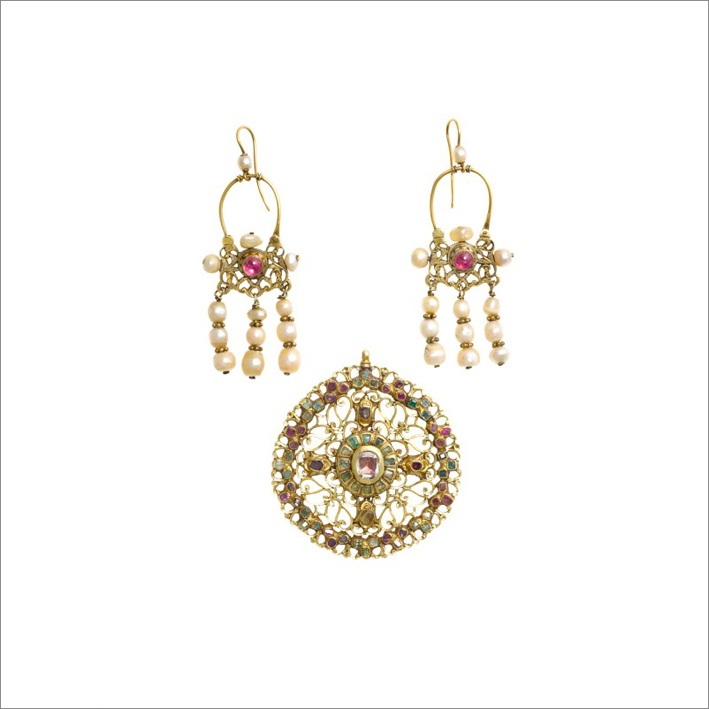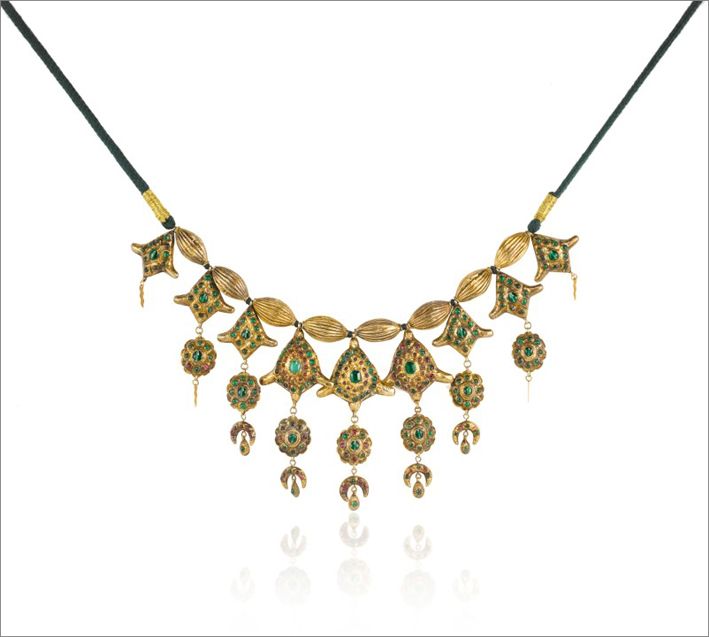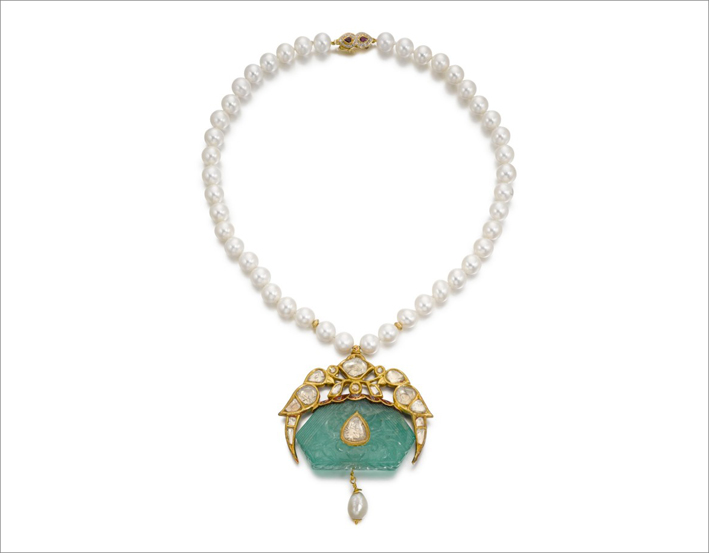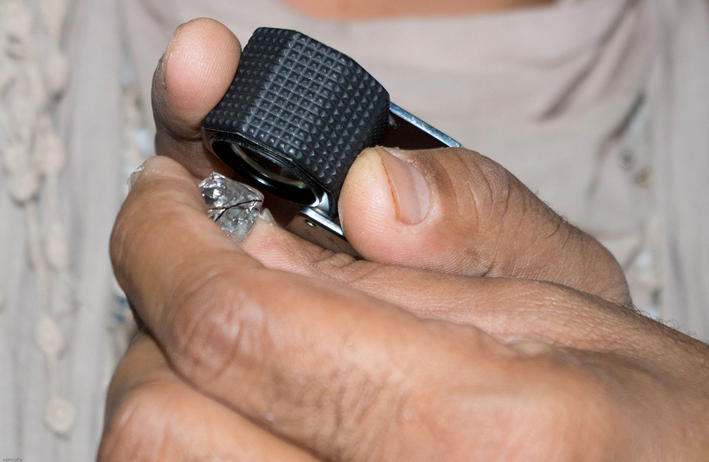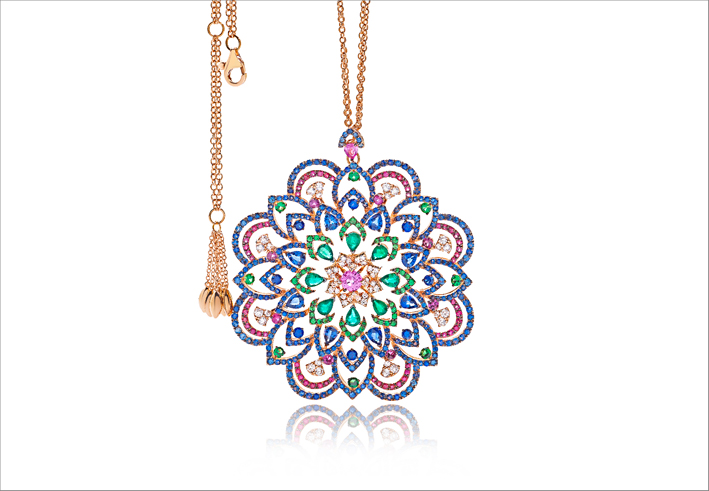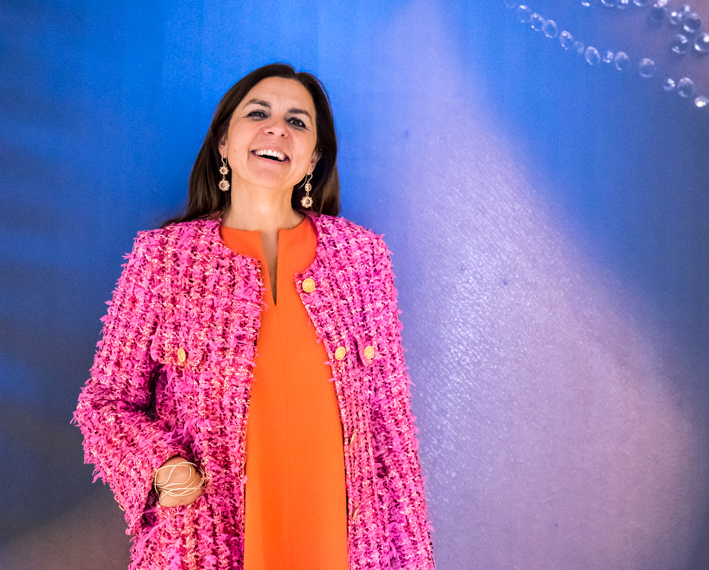The charm of exotic and precious jewels: Sotheby’s dedicates an auction to the theme Arts of the Islamic World & India. Most of the pieces concern objects, carpets, prints, paintings. But there are also jewels. And two, in particular, attract attention: they are glasses from an unknown princely treasure. The truly unique aspect of these glasses is that they are made with diamonds and emeralds. The auction estimate (London, October 27) for these unique jewels is 1.5 – 2.5 million pounds each. They can be seen by the public in Hong Kong (October 7-11) and London (October 22-26).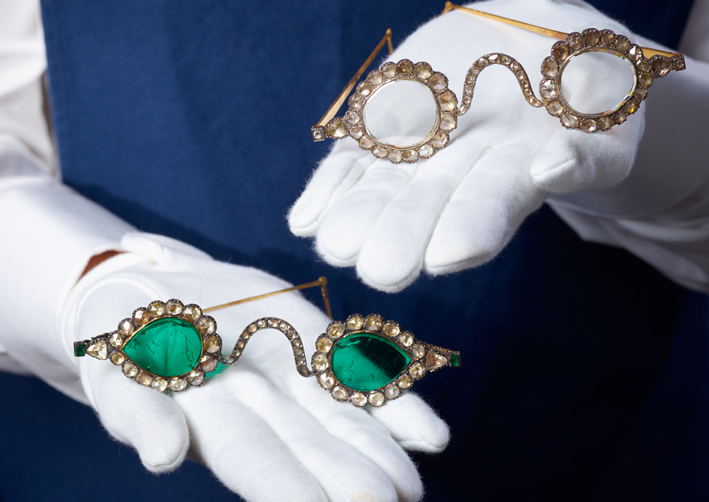
These extraordinary curiosities bring together myriad threads – from the technical mastery of the cutter and the genius of craftsmanship to the vision of a patron who chose to fashion two pairs of eyeglasses quite unlike anything ever seen before. They are undoubtedly a marvel for gemologists and historians alike, and it is a real thrill to be able to bring these treasures to light and to offer the world the opportunity to wonder at their brilliance and the mystery behind their creation.
Edward Gibbs, president of Sotheby’s Middle East & India
The history of these glasses begins in 17th-century Mughal India, at a time when imperial wealth, scientific knowledge and artistic endeavor simultaneously reached their peak. Commissioned by an unknown prince, an artist carved a diamond weighing over 200 carats and a brilliant emerald weighing at least 300 carats. Evidence of the technical skill involved, there is no known existence of any comparable example of both. Around 1890, the lenses were inserted into new frames, decorated with rose-cut diamonds.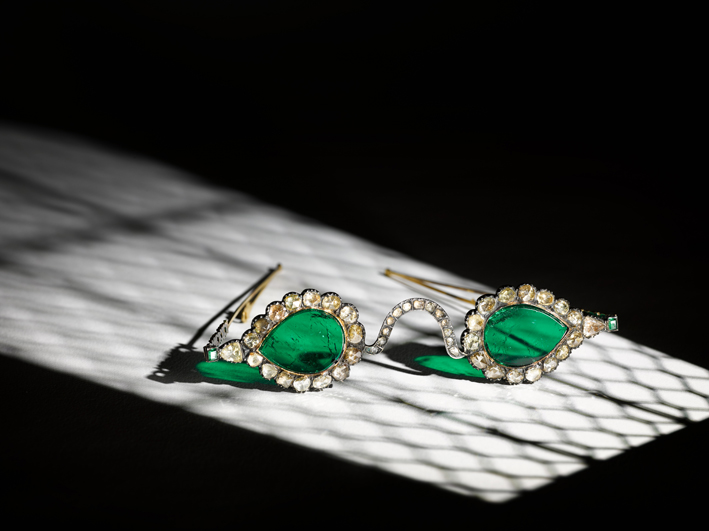
The original patron for whom the glasses were commissioned remains unknown, but they stem from a rich period of artistic and architectural achievement during the reigns of the Great Mughal of the Akbar emperors (1556-1605), Jahangir (1605-1627), Shah Jahan (1627 -1658) and Aurangzeb (1658-1707).
The quality and purity of the gems is in itself extraordinary and stones of this size would undoubtedly have been an emperor’s reserve. The diamonds are flawless, thought to come from the Golconda mines in South India. Cut in pairs from a single natural diamond, possibly the largest ever found, they now weigh 25 carats together. The facet around the edge shows extreme skill, arranged to maintain transparency in the lenses while releasing light from the edges. The emeralds also come from a single natural Colombian gem and now weigh 27 carats. The bevel of the emeralds has been precisely angled to maintain the intensity of the color in the stone.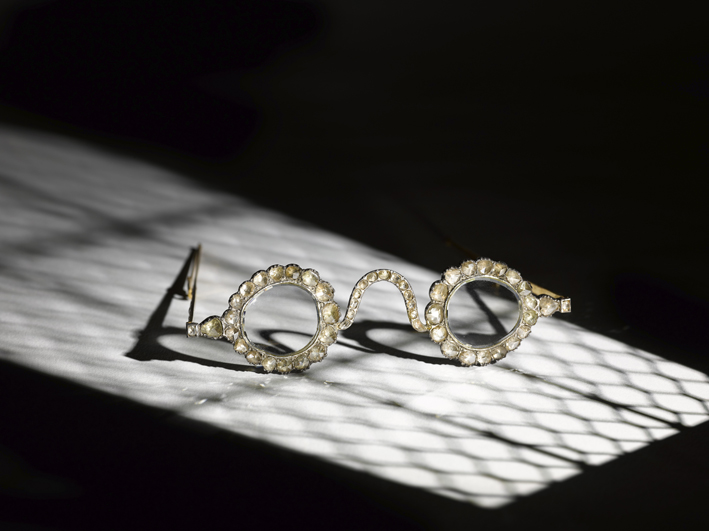
While ordinary lenses work simply to improve vision, these filters were aids for a spiritual function, with diamonds meant to illuminate and emeralds believed to possess miraculous powers to heal and ward off evil. In the work Naturalis historia, a treatise that dates back to the first century, Pliny the Elder tells that the Roman emperor Nero observed the gladiator contests through the surface of a precious green stone. Nero’s tutor, Seneca, was an expert in refraction of light, mirrors and optics, and these are thought to have been one of the first glasses ever. Many centuries later, an inventory of the treasure of Charles V of France mentions beryls (a family of precious stones, which includes emerald and aquamarine) framed like spectacles.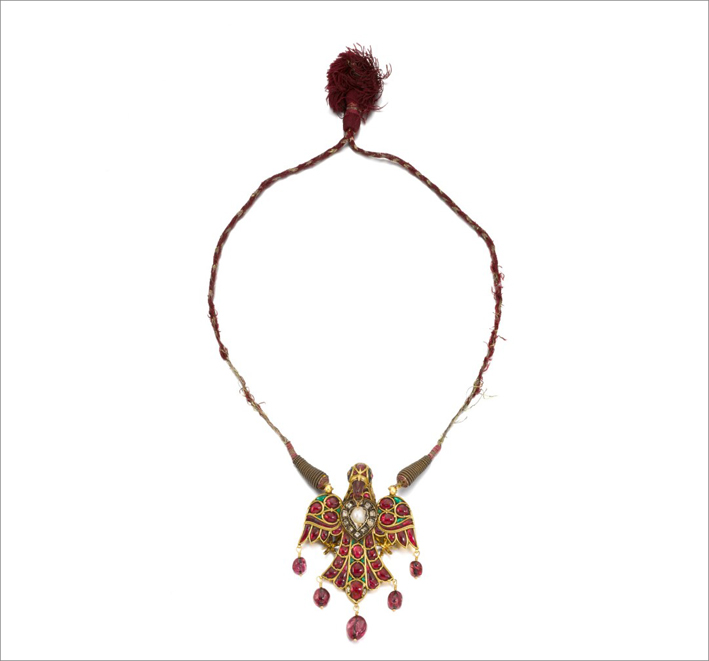
Closer to where these examples originate, in India, following the tragic death of Shah Jahan’s beloved wife, in whose honor the Taj Mahal was painstakingly built, the emperor is said to have wept so many tears that he had need to heal his sick eyes with emerald gems.